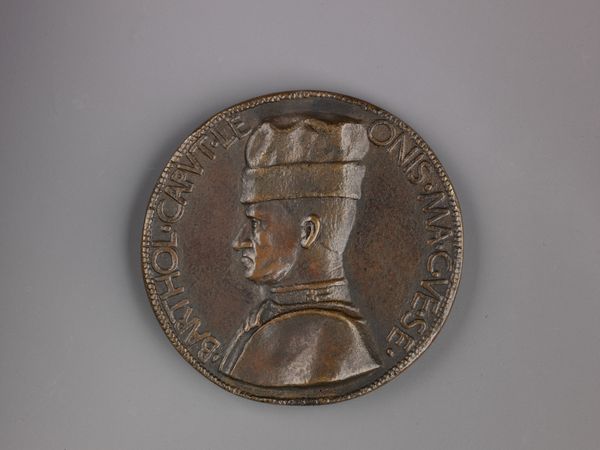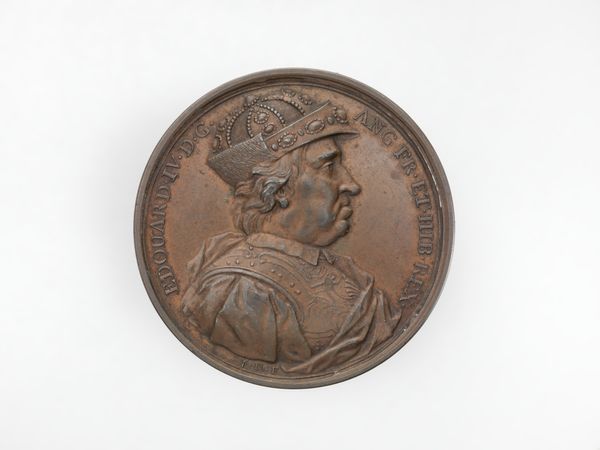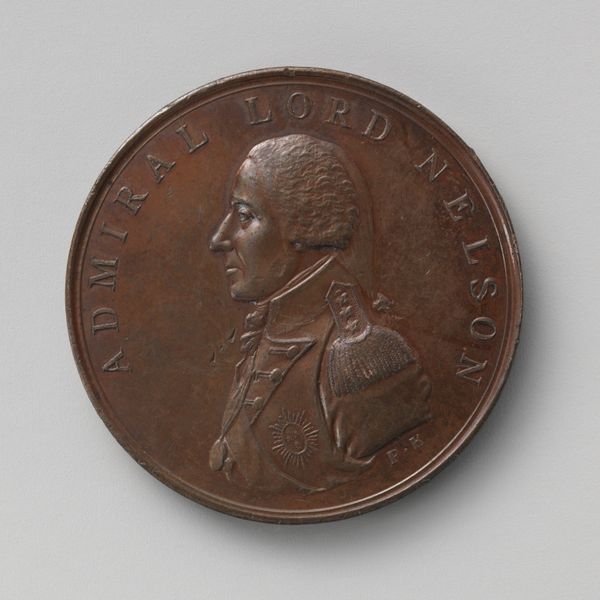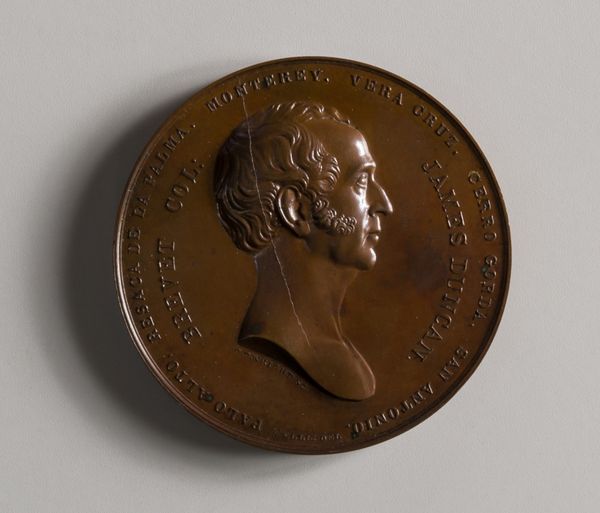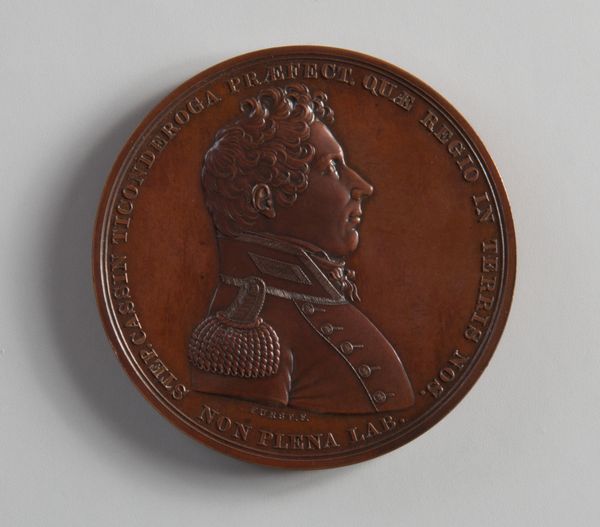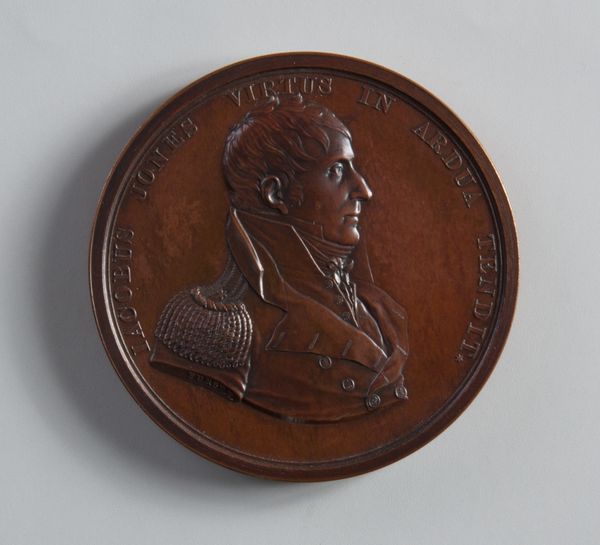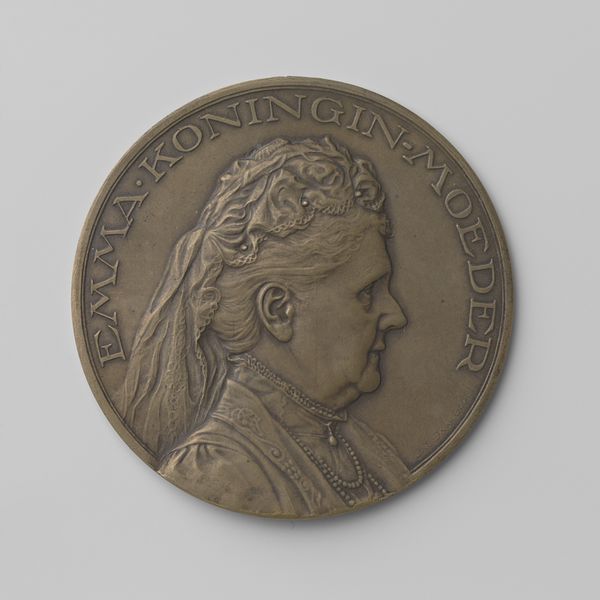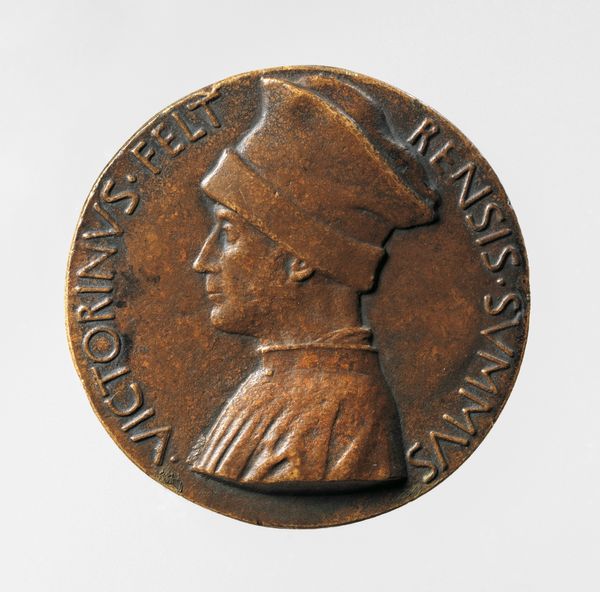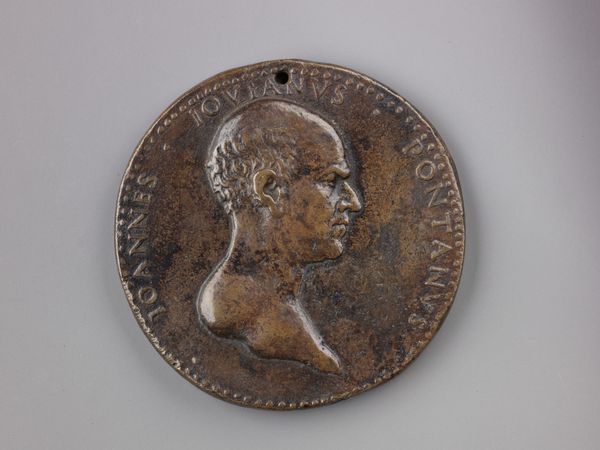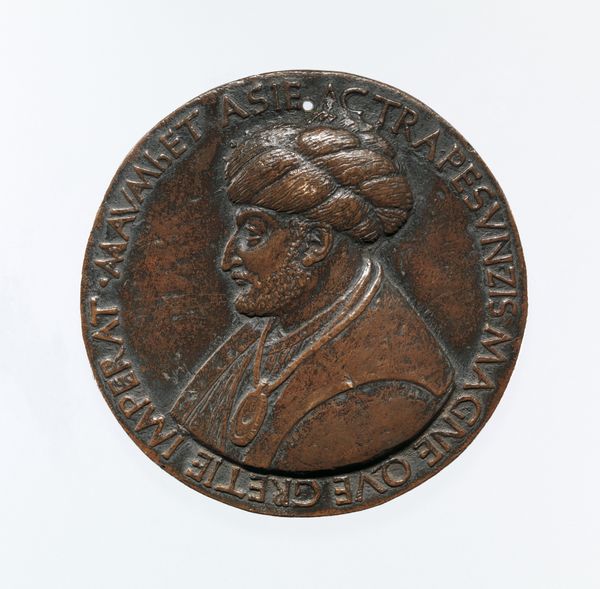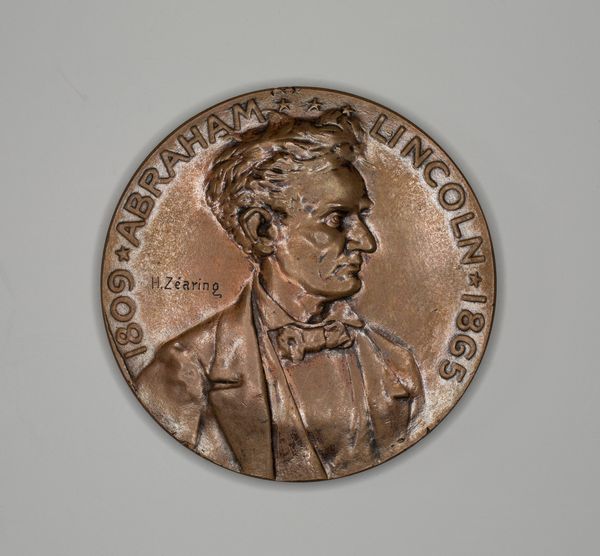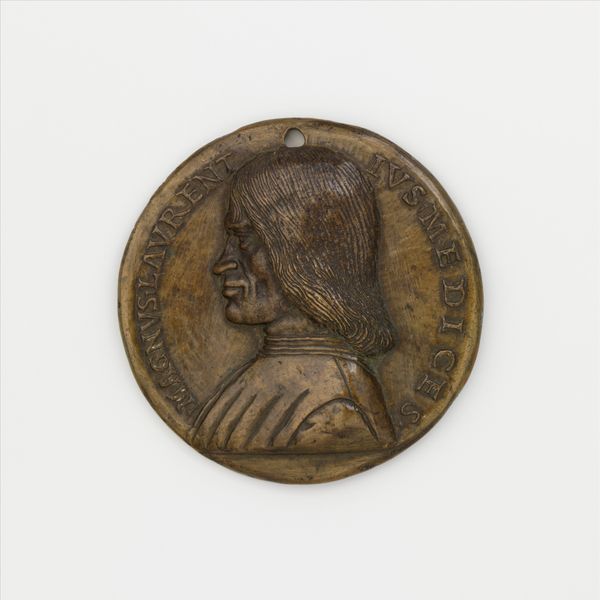
metal, relief, bronze, sculpture
#
portrait
#
medal
#
high-renaissance
#
metal
#
sculpture
#
relief
#
bronze
#
sculpture
#
italian-renaissance
Dimensions: Diam. 9 cm, wt. 192.32 g.
Copyright: Public Domain
Curator: Here we have a bronze medal from the 1450s, created by Matteo de' Pasti, currently held at the Metropolitan Museum of Art. It’s a portrait medal of Benedetto de Pasti. Editor: Intricate! My first impression is one of solemnity, perhaps even a certain sternness conveyed by the clean, sharp profile against that unadorned circular field. The reflective nature of the metal contributes a kind of coldness, would you agree? Curator: The deliberate smoothness and sharp delineation of form are noteworthy. Note the careful tooling that emphasizes the curvature of the face, how the planes intersect to produce a feeling of deep recession in so shallow a depth. The way the script echoes this effect is quite masterful. Editor: Absolutely, the incised inscription bordering the portrait enhances this aura of importance. This visual declaration encircles the subject and seems to both constrain and celebrate Benedetto de Pasti. Who was he? What narratives or aspirations are embedded within the symbolic choice to cast this man's image? Curator: It is believed that Benedetto was probably Matteo de' Pasti's brother. Matteo served as a die cutter and gem engraver for Leon Battista Alberti in the execution of medals and was castellan of the Castel Nuovo in Naples. The inscription obviously emphasizes his lineage. Editor: The repetition, a double helix almost, of Matteo's family name—both as the subject and artist—functions symbolically, rooting his identity both literally in name and artistically within the material of the medal itself, don't you think? Like a brand that’s been consciously iterated for an upper echelon of society. Curator: One might even extend the visual reading and see the curvature of the edge interacting dynamically with the profile itself. The tension thus created adds significant impact. I also detect a classicism rooted in this era. Editor: And what of the afterlife of these medals? The cultural work of bestowing this permanent image echoes Roman imperial strategies. They reinforce specific personas, memories, and a kind of lineage, as we’ve touched upon. These bronze medallions serve as tangible anchors, rooting individuals and their families within a constructed narrative. Curator: Indeed. Thinking about its historical moment and pure aesthetics, it stands as a striking example of the formal concerns defining Italian Renaissance portraiture. Editor: Ultimately, contemplating Benedetto rendered eternally in solid metal underscores how deeply interwoven images can be with cultural memory and even constructed identity. Fascinating, isn’t it?
Comments
No comments
Be the first to comment and join the conversation on the ultimate creative platform.
